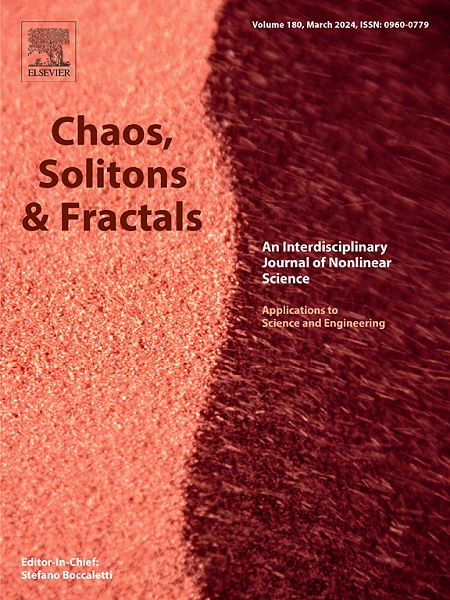Jam traffic pattern of a multi-phase lattice hydrodynamic model integrating a continuous self-stabilizing control protocol to boycott the malicious cyber-attacks
IF 5.3
1区 数学
Q1 MATHEMATICS, INTERDISCIPLINARY APPLICATIONS
引用次数: 0
Abstract
While connected-automated vehicles (CAVs) can share traffic data with external nodes through vehicle-vehicle or vehicle-infrastructure communication, the exoteric workshop communication setting makes the vehicles susceptible to cyber-attack interference, which will affect the normal information interaction between vehicles. Besides, in practice, the driver uses the accelerator, gear shift lever or brake pedal to accelerate and decelerate the vehicle, whereas the complex piecewise acceleration process is negligible in existing works. In doing so, we use historical traffic information to compensate for the missing core data caused by malicious cyber-attacks. We then propose a novel multi-phase lattice hydrodynamics model considering malicious cyber-attacks. A switch continuous self-stabilizing security control protocol is embedded to reinforce the steadiness of traffic flow. The typical optimal velocity function, which frequently serves as a basic hyperbolic tangent function, is swapped with a two-stage (three-phase) optimal velocity function to elucidate the intricate three-phase traffic flow system. Following the linear stability theorem, the critical stability criteria for the new model are identified. The outcome reveals that the cyber-attack intensity and control gain coefficient have profound effects on the steadiness of traffic flow, and the stage of phase transition is determined by what amount of turning points are contained in the optimal velocity function. The modified Korteweg–de Vries (mKdV) equation that indicates the density wave in a bottleneck area is established with the aid of nonlinear stability analysis and the associated analytical solution is obtained. Numerical studies have been conducted under periodic boundary circumstances to verify the correctness of the mathematical analysis.
集成连续自稳定控制协议的多相点阵水动力模型阻塞流量模式,以抵制恶意网络攻击
网联自动驾驶汽车可以通过车与车或车与基础设施通信与外部节点共享交通数据,但开放的车间通信设置使车辆容易受到网络攻击干扰,影响车辆之间的正常信息交互。此外,在实际操作中,驾驶员使用油门、变速杆或刹车踏板来实现车辆的加速和减速,而在现有工程中,复杂的分段加速过程可以忽略不计。在此过程中,我们使用历史流量信息来弥补恶意网络攻击造成的核心数据缺失。然后,我们提出了一种考虑恶意网络攻击的多相晶格流体力学模型。为了增强流量的稳定性,嵌入了交换机连续自稳定安全控制协议。将通常作为基本双曲正切函数的典型最优速度函数与两阶段(三相)最优速度函数交换,以阐明复杂的三相交通流系统。根据线性稳定性定理,确定了新模型的临界稳定性判据。结果表明,网络攻击强度和控制增益系数对交通流的稳定性有深远的影响,而交通流的相变阶段取决于最优速度函数中包含的拐点数量。借助于非线性稳定性分析,建立了表示瓶颈区域密度波的修正Korteweg-de Vries (mKdV)方程,并得到了相应的解析解。在周期性边界条件下进行了数值研究,验证了数学分析的正确性。
本文章由计算机程序翻译,如有差异,请以英文原文为准。
求助全文
约1分钟内获得全文
求助全文
来源期刊

Chaos Solitons & Fractals
物理-数学跨学科应用
CiteScore
13.20
自引率
10.30%
发文量
1087
审稿时长
9 months
期刊介绍:
Chaos, Solitons & Fractals strives to establish itself as a premier journal in the interdisciplinary realm of Nonlinear Science, Non-equilibrium, and Complex Phenomena. It welcomes submissions covering a broad spectrum of topics within this field, including dynamics, non-equilibrium processes in physics, chemistry, and geophysics, complex matter and networks, mathematical models, computational biology, applications to quantum and mesoscopic phenomena, fluctuations and random processes, self-organization, and social phenomena.
 求助内容:
求助内容: 应助结果提醒方式:
应助结果提醒方式:


